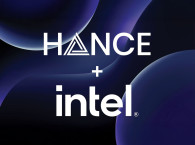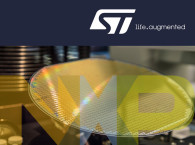Intel’s next-generation Xeon Phi processors promise to extend the benefits of code modernization investments being made for current generation products. These include a new high-speed fabric that will be integrated on-package and high-bandwidth, on-package memory that combined, promise to accelerate the rate of scientific discovery. Currently memory and fabrics are available as discrete components in servers limiting the performance and density of supercomputers.

“Intel is re-architecting the fundamental building block of HPC systems by integrating the Intel Omni Scale Fabric into Knights Landing, marking a significant inflection and milestone for the HPC industry,” said Charles Wuischpard, vice president and general manager of Workstations and HPC at Intel. “Knights Landing will be the first true many-core processor to address today’s memory and I/O performance challenges. It will allow programmers to leverage existing code and standard programming models to achieve significant performance gains on a wide set of applications. Its platform design, programming model and balanced performance makes it the first viable step towards exascale.”
Knights Landing will be available as a standalone processor mounted directly on the motherboard socket in addition to the PCIe-based card option. The socketed option removes programming complexities and bandwidth bottlenecks of data transfer over PCIe, common in GPU and accelerator solutions. Knights Landing will include up to 16GB high-bandwidth, on-package memory at launch —designed in partnership with Micron—to deliver five times better bandwidth compared to DDR4 memory, five times better energy efficiency, and three times more density than current GDDR-based memory. When combined with integrated Intel Omni Scale Fabric, the new memory solution will allow Knights Landing to be installed as an independent compute building block, saving space and energy by reducing the number of components.
Powered by more than 60 HPC-enhanced Silvermont architecture-based cores, Knights Landing is expected to deliver more than 3 TFLOPS of double-precision performance and three times the single-threaded performance compared with the current generation. As a standalone server processor, Knights Landing will support DDR4 system memory comparable in capacity and bandwidth to Intel Xeon processor-based platforms, enabling applications that have a much larger memory footprint. Knights Landing will be binary-compatible with Intel Xeon processors, making it easy for software developers to reuse the wealth of existing code.
For customers preferring discrete components and a fast upgrade path without needing to upgrade other system components, both Knights Landing and Intel Omni Scale Fabric controllers will be available as separate PCIe-based add-on cards. There is application compatibility between currently available Intel True Scale Fabric and future Intel Omni Scale Fabric, so customers can transition to new fabric technology without change to their applications.
Knights Landing processors are scheduled to power HPC systems in the second half of 2015. For instance, in April the National Energy Research Scientific Computing Center (NERSC) announced an HPC installation planned for 2016, serving more than 5,000 users and over 700 extreme-scale science projects.
“We are excited about our partnership with Cray and Intel to develop NERSC’s next supercomputer ‘Cori,’” said Dr. Sudip Dosanjh, NERSC Director, Lawrence Berkeley National Laboratory. “Cori will consist of over 9,300 Intel Knights Landing processors and will serve as an on-ramp to exascale for our users through an accessible programming model. Our codes, which are often memory-bandwidth limited, will also greatly benefit from Knights Landing's high speed on package memory. We look forward to enabling new science that cannot be done on today's supercomputers.”
Intel Omni Scale Fabric
Intel Omni Scale fabric is built upon a combination of enhanced acquired IP from Cray and QLogic, and Intel’s own in-house innovations. It will include a full product line offering consisting of adapters, edge switches, director switch systems, and open-source fabric management and software tools. Additionally, traditional electrical transceivers in the director switches in today’s fabrics will be replaced by Intel Silicon Photonics-based solutions, enabling increased port density, simplified cabling and reduced costs. Intel Silicon Photonics-based cabling and transceiver solutions may also be used with Intel Omni Scale-based processors, adapter cards and edge switches.

The current generation of Intel Xeon processors and Intel Xeon Phi coprocessors powers the top-rated system in the world—the 35 PFLOPS “Milky Way 2” in China. Intel Xeon Phi coprocessors are also available in more than 200 OEM designs worldwide.
Intel-based systems account for 85% of all supercomputers on the 43rd edition of the TOP500 list announced today and 97 percent of all new additions. Within 18 months after the introduction of Intel’s first many-core architecture products, Intel Xeon Phi coprocessor-based systems already make up 18% of the aggregated performance of all TOP500 supercomputers. The complete TOP500 list is available at www.top500.org.
To help optimize applications for many-core processing, Intel has also established more than 30 Intel Parallel Computing Centers (IPCC) in cooperation with universities and research facilities around the world. Today’s parallel optimization investment with the Intel Xeon Phi coprocessor will carry forward to Knights Landing, as optimizations using standards-based, common programming languages persist with a recompile. Incremental tuning gains will be available to take advantage of innovative new functionality.
www.intel.com






